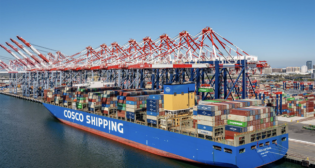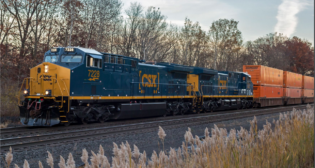
Hamberger outlines industry’s CBR safety strides
Written by Douglas John BowenAddressing the Railway Age Crude By Rail Conference in Arlington, Va., Thursday, June 12, 2014, Association of American Railroads (AAR) President and CEO Edward R. Hamberger detailed the many steps freight railroads are taking to boost the safety of moving crude oil by rail.
Hamberger (pictured) also reiterated the industry’s call for the federal government to increase tank car standards.
Railroads, Hamberger said, have conducted a top-to-bottom review of their operations and have updated aspects of their operations in light of the increased volumes moving on their lines.
 “In any discussion of crude by rail, safety and reliability are key factors in understanding how important rail has become to North America’s push for energy independence,” Hamberger said. “A strong safety culture is embedded in the railroads, and has long been a core attribute of the railroading industry – from planning, training, prevention and preparedness. Railroads’ reliability comes from a demonstrated track record of investing billions of dollars back into the rail network year over year, enabling railroads to swiftly meet the rising demand to move domestic energy resources our economy relies upon.”
“In any discussion of crude by rail, safety and reliability are key factors in understanding how important rail has become to North America’s push for energy independence,” Hamberger said. “A strong safety culture is embedded in the railroads, and has long been a core attribute of the railroading industry – from planning, training, prevention and preparedness. Railroads’ reliability comes from a demonstrated track record of investing billions of dollars back into the rail network year over year, enabling railroads to swiftly meet the rising demand to move domestic energy resources our economy relies upon.”
In addition to steps taken by the railroads, Hamberger noted the importance of increasing the safety of tank cars used to move crude oil, as well as ensuring shippers properly classify the oil being generated from domestic fracking operations.
“Railroads are taking multiple steps to further increase the safety of transporting crude oil, but more can be done when it comes to the tank cars used to haul it,” Hamberger said. “Railroads believe that federal tank car standards should be raised to ensure crude oil and other flammable liquids are moving in the safest car possible based on the product they are moving. The industry also wants the existing crude oil fleet upgraded through retrofits, or older cars to be phased out as quickly as possible.”
The rail industry has also stepped up its efforts to communicate and coordinate with communities and first responders, and railroads are dedicating tremendous resources to prevent and prepare for emergency situations all along their lines, Hamberger noted.
“Railroads are working with state and local emergency response officials to ensure those who need to know what is moving through their area are informed and trained to respond to an emergency situation,” he said.
“The industry has also taken the lead in designing new training programs focused specifically on emergency response incidents involving crude oil to make sure first responders have the skills and training they need,” the CEO said.



